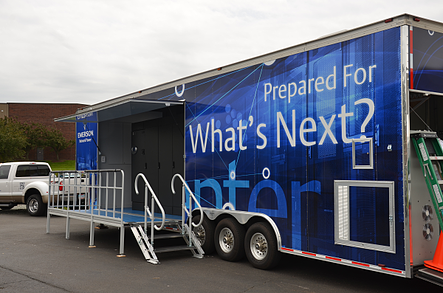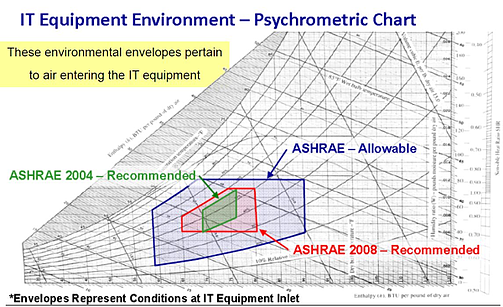Critical Environments: Power, Cooling, and Infrastructure
For HVAC Emergencies: 1-866-DVL-HVAC | For UPS Emergencies: 1-800-LIEBERT
For Generator Emergencies in CO, NM, or WY:303-953-3128
For HVAC Emergencies, please call 1-866-DVL-HVAC
For HVAC Emergencies: 1-866-DVL-HVAC | For UPS Emergencies: 1-800-LIEBERT
For Generator Emergencies in CO, NM, or WY:303-953-3128
For HVAC Emergencies, please call 1-866-DVL-HVAC
by Mike Rinaldi on 4/17/13 10:36 AM
Topics: Emerson Network Power, data center infrastructure, reduce cost, Data Center, data center design, data center infrastructure management, robust data center, electrical distribution, reduce downtime, data center outages, DC Power, sccr, short circuit current ratings
by Mike Rinaldi on 4/2/13 3:19 PM
EVault, a Seagate company, found in a 2011, 17 percent of IT decision-makers would rather have their teeth pulled without using painkillers than have to inform their bosses of a critical data loss.
Things in 2012 are not much better, the San Francisco-based cloud storage vendor found in its late-2012 survey of 650 IT decision-makers from companies ranging in size from 100 to over 3,000 employees in the U.S., the U.K, France, Germany and the Netherlands.
About 24 percent of respondents to the survey admitted to not telling their CEOs they are not backing up all files, especially those on mobile devices. About 38 percent admit they worry about their data not being saved securely or whether any work has been backed up at all.
They were right to worry. The IT decision-makers admitted that 53 percent of their companies had experienced data loss within the last 12 months, up significantly from the 31 percent that had that experience, according to the 2011 survey.

Topics: reduce cost, Data Center, data center infrastructure management, efficient data center, reduce downtime
by Mike Rinaldi on 10/25/12 2:54 PM
An organization that provides professional development and technical support to special education K-12 students found its data center infrastructure to be prone to frequent outages and poor performance, which had a negative impact on the availability of student-targeted services. In addition, their environment was not designed to house a data center and did not have dedicated fire suppression.
What challenged the organization's IT manager and the rest of his team was that they would need to install any infrastructure upgrade solution quickly between Friday evening and Monday morning and that the IT space they had was small; only around 130 square feet.
While researching a solution to fit their needs, the organization attended an education technology conference - in search of the right offering. At the conference, the IT manager visited the Emerson Network Power booth, saw a demo of the SmartRow infrastructure, and sat in on a presentation.
The rest is history - a New Data Center in 48 hours!
See the SmartRow in Person
A simple, cost-effective solution designed to quickly expand IT capacity when you don't have the luxury of more data center white space.

Topics: Emerson Network Power, reduce cost, Data Center, kW per rack, data center energy, data center infrastructure management, robust data center, Containment, reduce downtime, pod
by Mike Rinaldi on 10/11/12 3:50 PM
The fallout from the Sunday September 23rd NY Times front page article entitled Power, Pollution and the Internet which was purported as an investigative reporting piece has begun to spread. In my last blog, I jokingly remarked that the general public would go out and tweet and post Facebook tirades on their newest iPhones. Well it has clearly moved beyond that.
Only a few days later on Sept 27, Ranking Committee Members of the US House of Representatives Henry A. Waxman, Member Bobby L. Rush and Anna G. Eshoo sent letters to the US Department of Energy (DOE) and Environmental Protection Agency (EPA), to request an update on efforts to improve energy efficiency in data centers across the county.
This was posted as an open letter to the US EPA and DOE in effect demanding an explanation of how and why they could allow the apparently flagrant energy and environmental disaster equivalent of the Exxon Valdez oil spill happen, while these two major government agencies ignored the travesty. The letter specifically cited the NY Times article as the cause for their concerns and the motivating force behind the letter. Perhaps by triggering the open letter from members of Congress, the NY Times may feel they have brought justice to the ostensibly polluting, wasteful world of the Data Center Industry, in the same vein as the Washington Posts breaking open of the Watergate scandal.
I agree that there are many "older" data centers that are less efficient than the newest designs. There is no question that there is always room for improvement in almost any system or process and the data center is no exception. However, the NY Times article did not provide both sides of the issue, perhaps because that would have made it less controversial.
Published on 8th October 2012 by Julius Neudorfer, Data Center Dynamics

Topics: data center infrastructure, reduce cost, Data Center, data center design, data center energy, data center infrastructure management, Containment, electrical distribution, reduce downtime
by Mike Rinaldi on 10/5/12 3:23 PM
Don Beaty has built some of the worlds most efficient data centers. Between 2004 and 2011, Beaty has been resonsible for crafting recommendations on data center cooling for the leading industry group for heating and cooling professionals. Those dual roles have provided Beaty with a unique vantage point on the evolution of new strategies to cool servers implementing cutting-edge techniques for the industrys leading innovator as his day job, while working to develop standards and recommendations that can work for a broad spectrum of data center operators.

Allowable vs. Recommended ASHRAE Guidelines - Design Your Data Center
The majority of data centers have multiple generations of technology, some type of spinning disc, some type of tape storage and maybe even some mainframe systems. These data centers can still be extremely energy efficient, but are not going to see the extremes of the ASHRAE design guidelines. They are the data centers that should probably stay with the ASHRAE recommended guidelines. Below is an example of the recommended versus allowable ASHRAE Guidelines. Please note that the recommended temperature guidelines didnt change in 2011, only the allowable.
Temperature
2004 20C to 25C - Recommended
2008 18C to 27C - Recommended
2011 5C to 40C - Allowable
Humidity
2004 40 to 55% - Recommended
2008 35 to 60% - Recommended
2011 20 to 80% - Recommended
One thing we are seeing more and more of today is confusion over what temperature and humidity parameters data centers should be designed for. Most of the discussion seems to assume that there is a monolithic block of data centers that can all be designed the same way. Nothing could be further from the truth.
Topics: Data Center, kW per rack, data center energy, PUE, electrical distribution, reduce downtime, data center outages, 7x24 exchange
Philadelphia | Albuquerque | Boise | Denver | Harrisburg | Salt Lake City
Headquarters: 115 Sinclair Rd., Bristol, PA 19007
1-215-785-5950